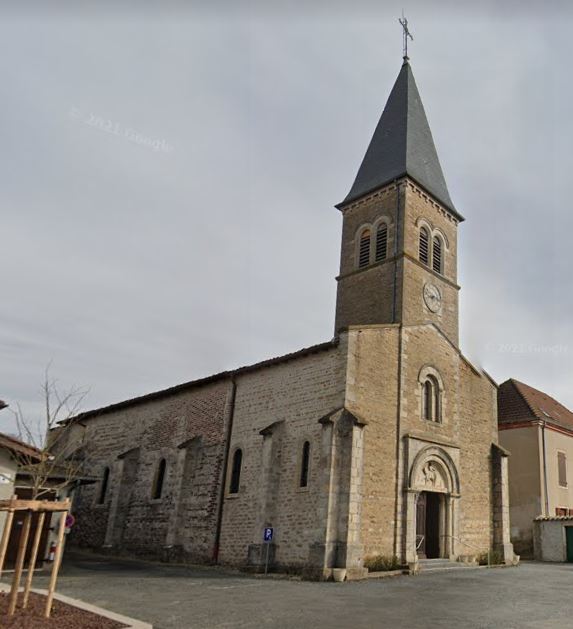La plus ancienne mention d’une église Saint-Martin à Baneins est dans un document datant de 1153. Lieu de culte de la paroisse d’Athaneins qui était une possession de la seigneurie de Baneins. Réaménagée au XVe siècle, les cahiers de doléance montrent que la paroisse est pauvre au XVIIIe siècle. De nombreux travaux sont réalisés au XIXe siècle, et l’église est agrandie en 1859, avec la construction d’une nouvelle façade. De nouveaux travaux de restauration de l’édifice, de l’autel et des vitraux, sont réalisés en 1969.
Le tympan, réalisé en 1869 par le père Richter, curé de Saint-Laurent, figure une charité de saint Martin en bas-relief. Saint Martin est représenté à cheval, en armure, en train de couper son manteau avec son épée. Le mendiant est à demi nu, agenouillé derrière la croupe du cheval.
L’entrée du chœur est ornée d’une statue de saint Martin en évêque, du XXe siècle, surmontant un autel dédié à saint Antoine.


The oldest mention of a church of Saint-Martin in Baneins is in a document dating from 1153. It was the place of worship of the parish of Athaneins, which was a possession of the lordship of Baneins. Reorganised in the 15th century, the cahiers de doléance show that the parish was poor in the 18th century. Numerous works were carried out in the 19th century, and the church was enlarged in 1859, with the construction of a new façade. Further restoration work on the building, the altar and the stained glass windows was carried out in 1969.
The tympanum, created in 1869 by Father Richter, the parish priest of Saint-Laurent, depicts the charity of Saint Martin in bas-relief. Saint Martin is represented on horseback, in armour, cutting his cloak with his sword. The beggar is half naked, kneeling behind the horse’s rump.
The entrance to the choir is decorated with a 20th century statue of St Martin as a bishop, surmounting an altar dedicated to St Anthony.

 "/>
"/>